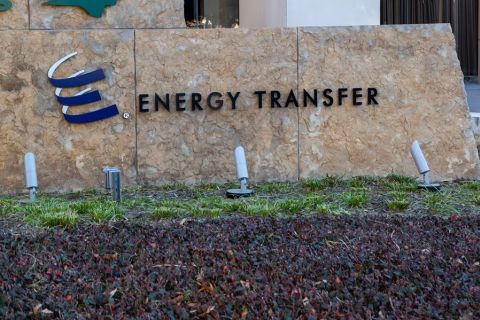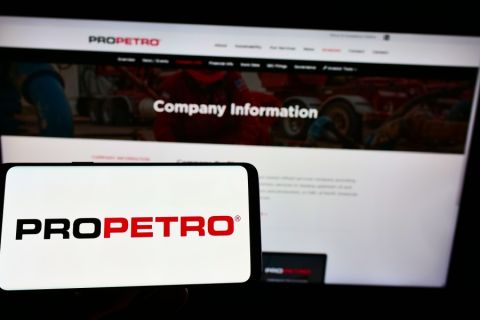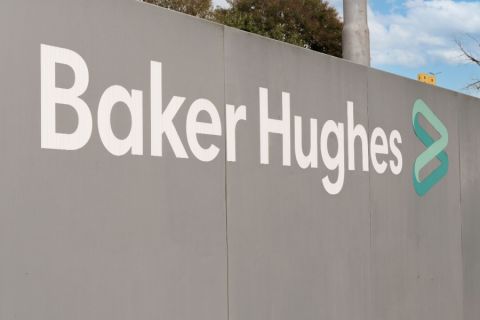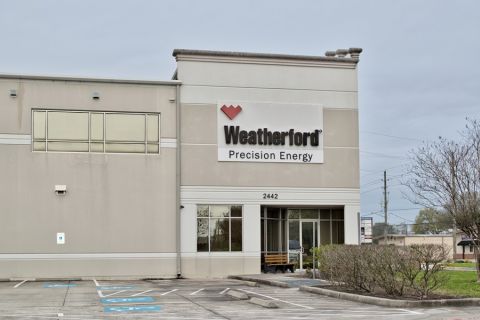Jennifer Pallanich, senior technology editor, Hart Energy: Hi, I'm Jennifer Pallanich here with Hart Energy Live at SUPER DUG with Jeff Beach of Universal Pressure Pumping.
Jeff Beach, senior vice president of sales and marketing, Universal Pressure Pumping: Hi Jennifer.
JP: Hi Jeff. How are you?
JB: Good. Thanks for having me.
JP: Thank you. So when we were on stage earlier today, you mentioned something about threading the digital needle. Tell me more about that.
JB: Yeah, one of our big initiatives within our wider digital transformation is making our current machine health platform evolve, allowing it to evolve into true predictive analytics. Today, the pressure pumping service space is very complex, and traditional methods of censoring equipment and ultimately working towards predictive analytics doesn't lend so well. Again, due to the complexity that if you make a comparison to a traditional industrial-use case where you have a fixed piece of equipment, a true fixed asset, a piece of rotating equipment that's censored, let's just say for vibration analysis, a piece of equipment works in a very narrow operating envelope for 24 hours a day, for many weeks, months, years at a time. So, the statistical database that's built makes it—it’s not easy—but makes it easier to predict an equipment failure. When you kind of contrast that to a hydraulic fracturing operation, you have a plurality of equipment that's all connected together and in a particular stage or over a particular day, certainly over the completion time of a well, many numbers of those units are replaced in time. So that adds multiple layers of complexity. When you look at the wider statistical analysis of making a truly predictive—in the wider system of working towards true predictive analytics—that complexity becomes very difficult. So through the years, we've done a number of pilots working with a lot of big firms from Silicon Valley, big tech companies that have expertise in that space. But ultimately, we've yet to thread that needle and reach that level of success that we're working towards.
Today we have an enhanced condition-based monitoring system, but that lays the foundation for us to work there. And there's a lot of smart people in the industry that are working on this problem, not only in our company, but all of our peers and the operating companies as well. They're all working towards that, because ultimately if we can drive cost out of our operations, and when we talk about predictive analytics, it's removing R&M costs, the repair and maintenance, and capex related to repair, reducing that, utilizing just like in supply chains when you have something that's delivered just in time to do a repair or equipment replacement, just in time to get the maximum use out of that piece of equipment. So that's something that we're working towards. I don't make any claims that we're very close to that. It's something that we spend a lot of time on and it's a big challenge for the industry.
JP: So let's switch gears a little bit and let's talk about the pros and cons of dual fuel versus maybe a more traditional method, versus maybe shifting towards a NextGen platform.
JB: One of the bigger advantages of transitioning towards a dual fuel system is the replacement, the substitution of the consumption of diesel. So for our customers, and ultimately for the service company, depending on who's paying for that fuel, natural gas is much cheaper. And for some of our customers that are producing gas in their fields, if they can gather that gas and deliver gas to pad, their opportunity costs for that fuel to pad may be nearly $0. So, if they can substitute out diesel, which is delivered to pad today for say $3.50 upwards of $4 per gallon, if you can substitute that fuel for something that costs you $0 or something equivalent in a barrel of oil equivalent, maybe $1 or $2, there's a large savings that will accumulate over an annualized period.
So that’s a big deal. One of the things that's important to balance in that, is there's also a drive in the industry to reduce emissions. And there's a trade-off. When you look at the evolution of a tier two engine to a tier four engine, the big initiative from the EPA at that time was to reduce NOx [nitrogen oxides], right? But the big discussion today is around CO2, methane emissions and CO2 emissions themselves. So CO2 and CO2e. That was not addressed in the tier four framework. So there is something to be said that, in actuality in the diesel platforms, a tier four engine emits more CO2 than a tier two engine. It sounds counterintuitive, but it's actually the case because the initiative at the time was to reduce NOx. So as an example, that's one of the trade-offs. And then depending in that tier four system, assuming we're talking about a newer dual fuel system, how the engine consumes the natural gas to be consumed, there's a varying amount of methane emission, which is referred to as methane slip. So the amount of methane that moves through the engine through the combustion cycle, but it's not, it's actually not burned and it goes out through the exhaust as pure methane. Again, looking at the manufacturer's platform, there is one platform that has a meaningfully less methane slip as compared to another competing platform. So those are some things to consider, but ultimately a big driver in the industry is to reduce our diesel consumption, substitute that with natural gas and ultimately in the end it does reduce emissions, certainly.
When you then move all the way to the other end of the spectrum and look at NextGen platforms, those NextGen platforms almost exclusively burn 100% natural gas. And most of those platforms will utilize a natural gas turbine, which inherently do not have methane slip. So 100% of the natural gas will be burned and then exhaust, and the other major engine platform is a natural gas reciprocating engine, which has very little methane slip. So we make a big step change when we get to those NextGen platforms.
Now, the difference between and the trade-offs between a natural gas reciprocating engine and a gas turbine, the natural gas reciprocating engine has a much higher thermal efficiency, say 40%, and a gas turbine has around 30%. So even though it has a little bit of methane slip in the natural gas reciprocating engine, it's offset by its higher thermal efficiency. What I mean by thermal efficiency is the amount of energy, the caloric energy, that's in the fuel that's translated to mechanical horsepower. So you actually get more horsepower per unit of fuel from a natural gas reciprocating engine as compared to a gas turbine. That's a lot to digest there.
JP: That's a lot to unpack. Thank you for going over that. I wanted to bring something up that you also mentioned on stage, and you were talking about automation and you were talking about technology and you were talking about this changing workforce. Tell me a little bit about how your company is using automation and technology to make operations more efficient, but also make it easier for newer entrants into the workforce to be safe and efficient while they're at work.
JB: When we launched a number of these development projects, the initiative was to deliver repeatable operations, right? So they're automated obviously, so we can get the same deliverable repeated time and time again. And that's a value and that helps drive efficiency. Ultimately, if our automation could emulate the performance of our best crew on its best day, day after day after day, that was the benefit, that was the mindset when those projects were launched. And if you look at what's transpired in our industry over the past couple of years, it's very dynamic. It's very transient. I hate to say it, maybe it's become less popular of a space to attract a workforce. So that adds another layer of importance for automation, that if we have a dynamic workforce that may not have years of competency and that are newer to the industry, having an automation platform that'll deliver that consistent, repeatable deliverable that our historically best crew delivered. That lends well for our service. It lends well to the industry and it makes our customers happy.
JP: It takes a little bit of the pressure off.
JB: Takes a little, yeah. No pun intended. Yeah. Thank you Jennifer.
JP: And thank you for joining us for this episode of Hart Energy Live.
RELATED
E&P Tech Trends: How Are Universal Pressure Pumping Next Gen Pumps Changing the Game? [WATCH]
Recommended Reading
Talos Energy Expands Leadership Team After $1.29B QuarterNorth Deal
2024-04-25 - Talos Energy President and CEO Tim Duncan said the company has expanded its leadership team as the company integrates its QuarterNorth Energy acquisition.
Energy Transfer Ups Quarterly Cash Distribution
2024-04-25 - Energy Transfer will increase its dividend by about 3%.
ProPetro Ups Share Repurchases by $100MM
2024-04-25 - ProPetro Holding Corp. is increasing its share repurchase program to a total of $200 million of common shares.
Baker Hughes Hikes Quarterly Dividend
2024-04-25 - Baker Hughes Co. increased its quarterly dividend by 11% year-over-year.
Weatherford M&A Efforts Focused on Integration, Not Scale
2024-04-25 - Services company Weatherford International executives are focused on making deals that, regardless of size or scale, can be integrated into the business, President and CEO Girish Saligram said.






